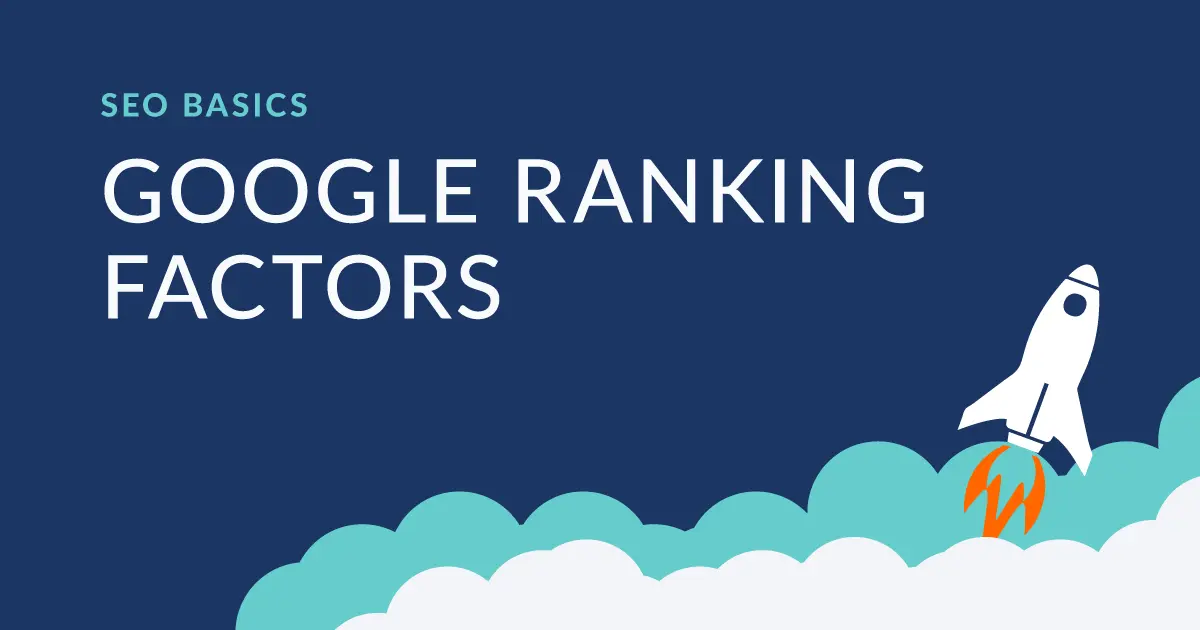
We all know that hardly anyone bothers to click beyond the first page of Google search results. The reason behind this behavior is a lack of trust in the lower-ranking pages and the desire to find answers quickly and effortlessly. That’s why Google ranking factors help you understand what is needed to be showcased as the “best results” on its first page. So what are the various Google Ranking factors? This comprehensive article will reveal these to you.
When it comes to search engine optimization (SEO), Google is the leading player, commanding the largest market share of online searches. Google employs a complex algorithm that considers numerous factors when determining the relevance and authority of a website. These factors can be broadly categorized into three main areas: on-page ranking factors, off-page ranking factors, and technical ranking factors.
On-Page Ranking Factors
Title Tags
One of the most critical on-page ranking factors is the optimization of title tags. Title tags serve as the headline for search results and provide a concise description of a web page’s content. Optimizing title tags involves incorporating relevant keywords, writing compelling copy, and adhering to recommended character limits. A well-optimized title tag can significantly impact click-through rates and improve search engine rankings.
Meta Descriptions
Meta descriptions are brief summaries that appear below the title tags in search results. Although not a direct ranking factor, well-crafted meta descriptions can influence user behavior and increase click-through rates. Writing compelling meta descriptions that accurately represent the content and entice users can indirectly improve a website’s visibility and attract more organic traffic.
Heading Tags
Proper usage of heading tags, such as H1, H2, and H3, is essential for both SEO and user experience. Heading tags provide a hierarchical structure to content, making it easier for search engines to understand the page’s main topics. By optimizing heading tags with relevant keywords and using them to structure the content logically, website owners can improve the readability and SEO-friendliness of their web pages.
Keyword Optimization
Keyword optimization involves researching and targeting relevant keywords within a website’s content. Proper keyword research helps identify the terms and phrases that users are using to search for specific topics. By strategically incorporating these keywords throughout the content, website owners can increase their chances of ranking higher in search results and attracting targeted organic traffic.
Content Quality
Content quality is a significant factor in Google’s ranking algorithm. Websites with high-quality, unique, and valuable content tend to rank better than those with thin or duplicate content. Creating engaging, informative, and comprehensive content not only helps improve rankings but also enhances user experience, increases dwell time, and encourages natural backlinking.
User Experience
User experience is an integral part of modern SEO. Google considers user signals like bounce rate, time on site, and page views as indicators of a website’s quality and relevance. To enhance user experience, website owners should focus on factors such as intuitive navigation, mobile-friendliness, fast loading times, and clear calls-to-action. Improving these elements can positively impact rankings and keep visitors engaged.
Off-Page Ranking Factors
Backlinks
Backlinks remain one of the most influential off-page ranking factors. When reputable websites link to a page, it indicates its credibility and authority. Acquiring high-quality backlinks from relevant sources can significantly boost a website’s rankings. Implementing strategies like guest blogging, influencer outreach, and content promotion can help attract valuable backlinks and improve organic visibility.
Social Signals
While social signals are not direct ranking factors, they indirectly impact a website’s visibility and traffic potential. Social media platforms provide opportunities for content promotion, brand exposure, and engagement. By leveraging social media effectively, website owners can amplify their reach, attract more visitors, and increase the likelihood of generating natural backlinks.
Brand Signals
Brand signals refer to online indicators of a brand’s presence and authority. Establishing a strong brand identity can positively influence search engine rankings. Consistent branding, positive online reviews, social media mentions, and offline mentions all contribute to brand signals. Building a reputable and recognizable brand can enhance user trust, increase click-through rates, and improve rankings.
Mobile Friendliness
In the mobile-centric era, having a mobile-friendly website is crucial for SEO success. Google prioritizes mobile-responsive websites in search results, as a large portion of internet users access the web through mobile devices. Optimizing website design and functionality for mobile screens, implementing responsive layouts, and ensuring fast loading times on mobile devices are essential for improving rankings and providing a seamless user experience.
Page Speed
Page speed is a critical factor for both user experience and SEO. Slow-loading websites often have higher bounce rates and lower conversion rates. Google considers page speed when determining rankings, as faster websites provide a better user experience. Website owners can optimize page speed by compressing images, minifying code, enabling browser caching, and utilizing content delivery networks (CDNs).
Technical Ranking Factors
Website Structure and Architecture
A well-organized website structure helps search engines crawl and understand the content efficiently. Implementing a logical hierarchy and intuitive navigation system improves user experience and helps search engines index and rank web pages accurately. Website owners should create clear categories, use breadcrumb navigation, and interlink related pages to establish a coherent and crawlable structure.
XML Sitemaps
XML sitemaps act as a roadmap for search engine crawlers, providing a comprehensive list of a website’s pages and their priority. By creating and submitting an XML sitemap to search engines, website owners can ensure that all pages are discovered and indexed. Regularly updating the sitemap and notifying search engines of changes helps improve crawlability and ultimately rankings.
Schema Markup
Schema markup, also known as structured data, provides additional context and information about a website’s content. By implementing schema markup, website owners can enhance search results with rich snippets, which can increase visibility and attract more clicks. Schema markup allows search engines to understand the context of content better and present it in a more informative way to users.
HTTPS and Security
Website security has become a significant ranking factor in recent years. Google prioritizes secure websites using HTTPS over non-secure HTTP sites. Implementing SSL certificates and securing website connections with HTTPS encryption not only improves rankings but also enhances user trust and data security.
Conclusion
Optimizing for Google ranking factors is crucial for website owners aiming to improve their visibility, attract organic traffic, and grow their online presence. By understanding and implementing effective SEO strategies, including on-page, off-page, and technical optimizations, website owners can enhance their chances of ranking higher in search results and reaching their target audience. Stay up to date with the ever-evolving SEO landscape, and continuously analyze and optimize your website to maintain a competitive edge.















